Diving the SS Natal – Collision in the Night [BOOK EXTRACT]
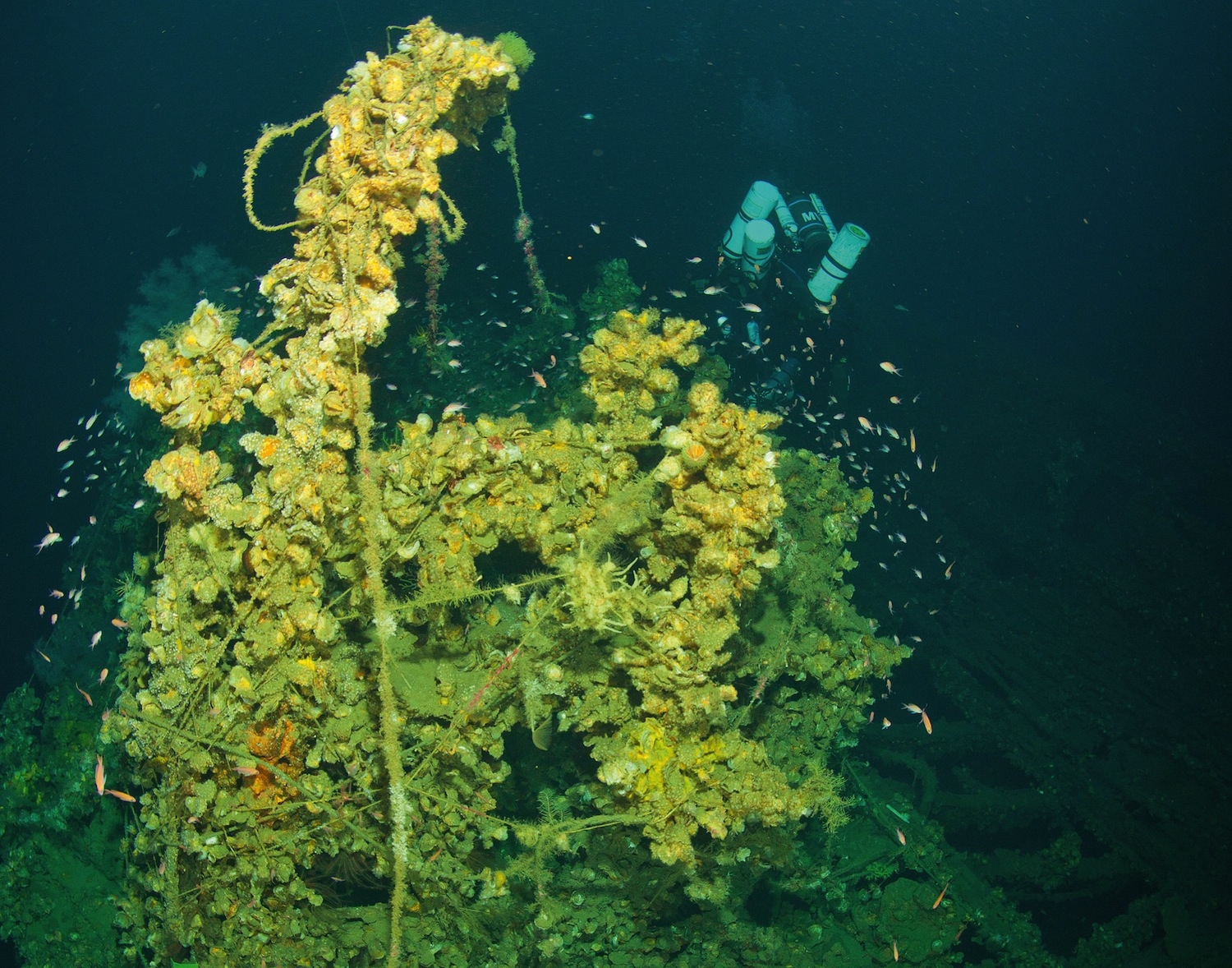
On board the beautiful ocean liner the SS Natal on the night of August 30, 1917, were several first-class passengers who placed their valuable gold and jewellery in the ship’s safe. The vessel sank barely ten minutes after a collision at night.
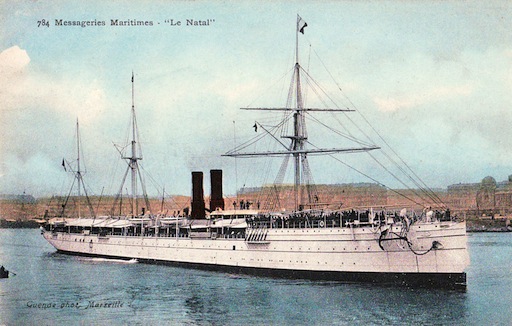 SS Natal SS Natal |
|
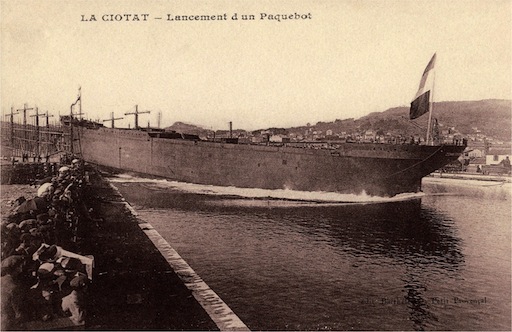 The wharf where Natal was built The wharf where Natal was built |
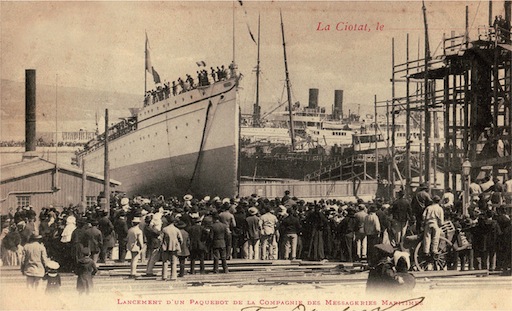 The wharf where Natal was built The wharf where Natal was built |
{tabulizer:include style[rs_eebavmpn.css] datatable[YToxOntzOjU6InRoZW1lIjtzOjk6ImxpZ2h0LmNzcyI7fQ==] id[tab_0L6zJScxTT]}
| SS Natal | |
| SPECIFICATIONS | |
| Type of vessel: | Passenger vessel |
| Owner: | Messageries Maritimes, France |
| Builder: | La Ciotat, France (1881) |
| Construction material: | Steel |
| Length: | 130 metres |
| Beam: | 12 metres |
| Tonnage: | 4,400 tons |
| Propulsion: | Steam engine/sail |
The SS Natal was capable of carrying more than 1,300 passengers, but took on only 503 during its last fateful boarding in Marseille. Once aboard they were free to enjoy the luxury of this ship during their journey to Madagascar, and rumours circulated that several rich people were on board who were fleeing the war with their fortunes. As it was wartime the captain ordered a complete blackout to hide the ship from the enemy.
The SS Natal was built in 1881 by Messageries Maritime in La Ciotat, France. She was a beautiful ship with luxurious decoration and passengers travelled in great comfort. When the order to sail was given the visibility was poor, but nothing that would cause undue concern.
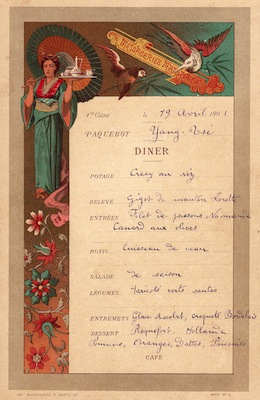
The captain watched from the bridge as the crew cast off and the vessel slid away from the docks. Slowly, the speed was increased until the three-cylinder compound steam engine reached its maximum pressure. Several miles from port the visibility suddenly became worse and the captain ordered a reduction in speed, as it was dangerous and he wanted to avoid a collision. It was a very dark night with a heavily overcast sky, and the visibility reduced by the minute. The first class passengers were enjoying a glass of wine or a cup of coffee when the liner was hit at full speed by a French cargo ship.
Save our souls
It was as if the ship was forced to a stop by a giant hand. Tables and chairs were thrown about and passengers were flung to the deck. They started to run around in panic while the crew tried to obey the orders of the officers. As the ship was taking on water quickly, the lifeboats were turned out straight away, and the crew tried to get the passengers into them once the first panic had subsided.
Meanwhile, the SS Natal had started to list, hampering the evacuation. On the lower decks, where the third-class passengers were accommodated, the water had already entered, causing many passengers to drown. The radio officer had been trying to send an SOS message, but it quickly became apparent that the ship would not stay afloat much longer and the captain gave the order to abandon ship. As the liner sank deeper and deeper, a number of people jumped overboard in panic trying to save themselves. Barely ten minutes after the collision the SS Natal sank with the captain still on board. Seventy-six passengers and twenty-eight crew members did not survive.
An underwater museum at 130 metres down
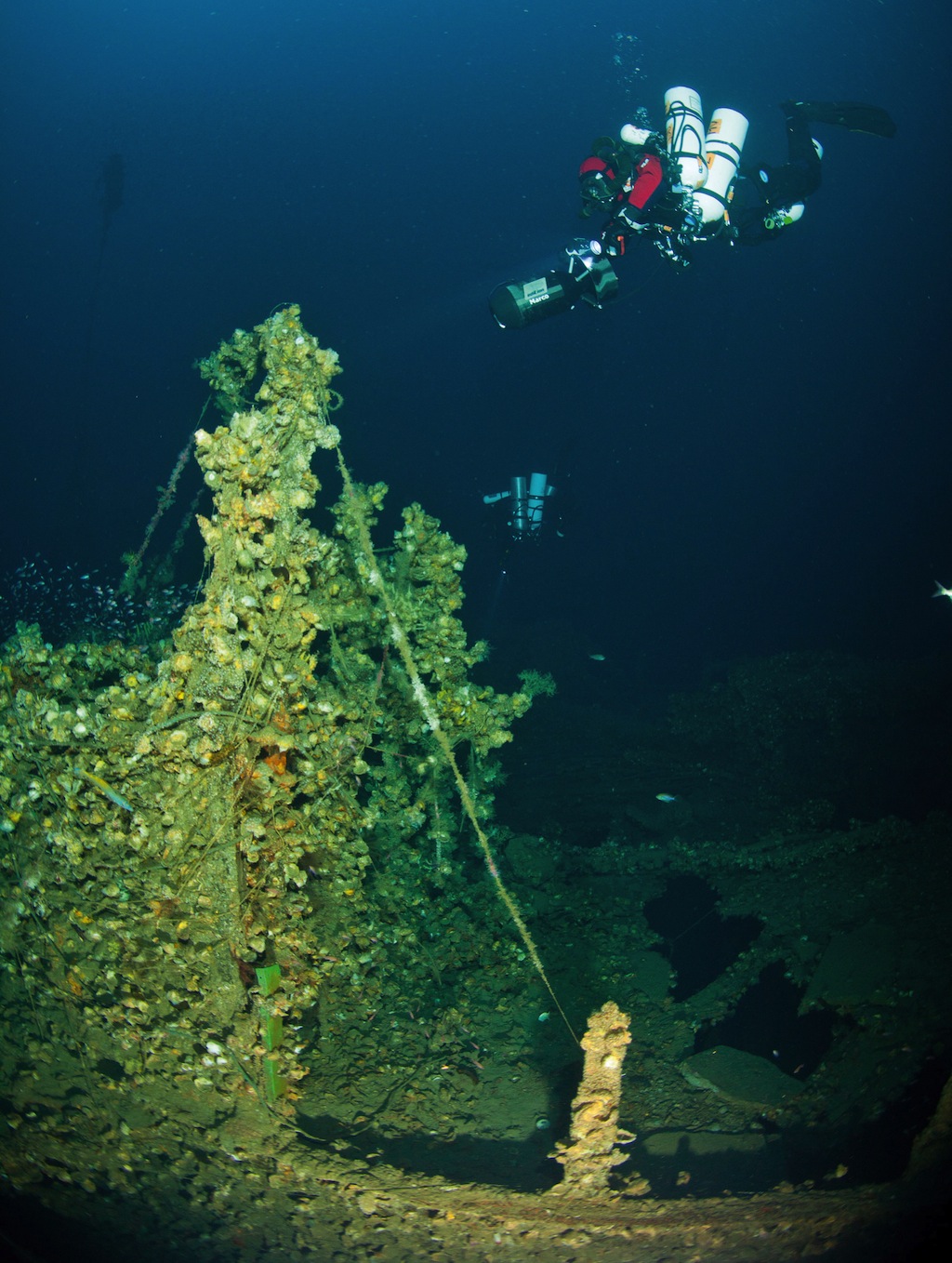
The wreck of the SS Natal can be found four miles south of the island lighthouse Le Planier, at a depth of 130 metres. The sonar images made it clear that the vessel was standing upright on its keel. Due to its depth and distance from the shore the wreck is difficult to reach and proved to be a time capsule from 1881 – filled with artefacts. A sturdy boat is needed to sail the 12 miles, which is only possible when the conditions are ideal – not much wind and minimum wave height are a must.
Using normal air is impossible during such a dive; the solution is a gas mixture containing helium in combination with a rebreather. A rebreather can enlarge the bottom time by recycling and scrubbing the breathing gas in a closed circuit clean of dangerous carbon dioxide. An underwater scooter is needed to be able to explore the full length of the wreck. The next problem we faced was putting together a team that was able to make such extreme deep dives.
Organisation of a complex dive
To compile the team I called on Pim van der Horst, a highly experienced rebreather diver and chairman of DIRrebreather. The DIRrebreather group has undertaken many expeditions and consists of members of different countries in Europe. For this expedition the group consisted of: Pim van der Horst (Netherlands), Eveline Verdier (France), Alexandre Fox (France), Frank Gentile (France), Vic Verlinden (Belgium), Armando Ribeiro (Portugal), Marco Valenti (Italy), Christophe Brieger (Germany) and Drazen Goricki (Croatia).
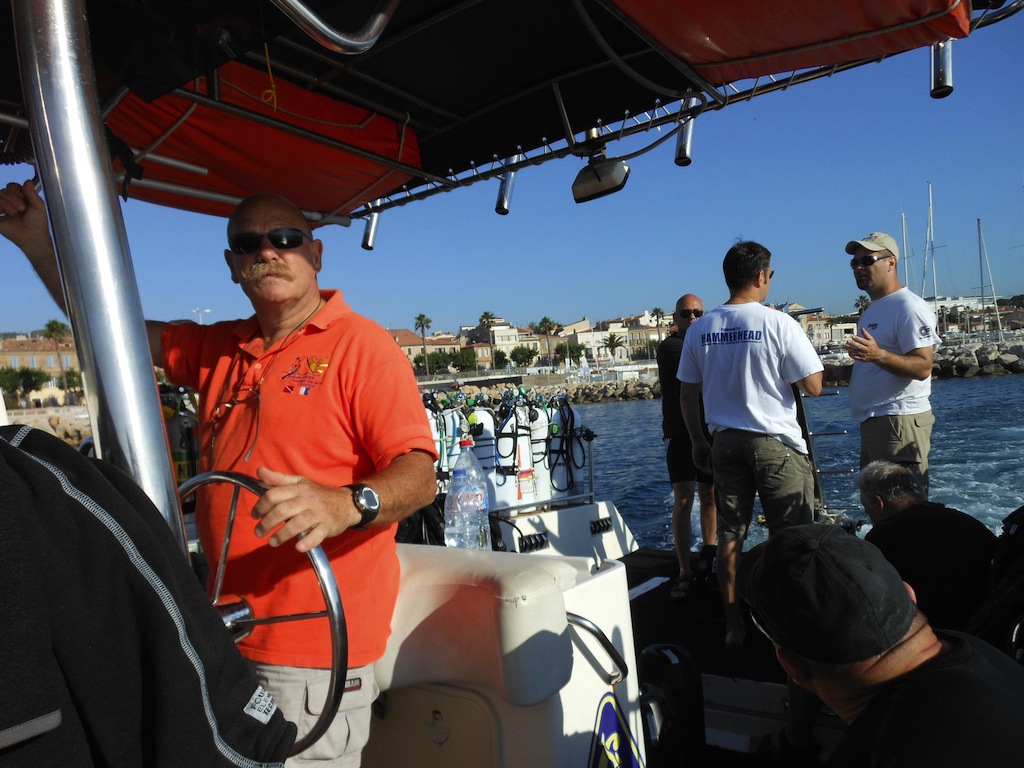
The dive centre Passion in La Ciotat was used as our base during this expedition. The owner of the centre was Philippe Peyruss, who was also the captain of the boat we wanted to use.
It was early in the morning when the group came together in the port and began loading. Nine rebreathers and twenty-seven dive cylinders of 12 litres each were taken on board. On top of this came the extra equipment, including four scooters, making the boat fully loaded. The weather was favourable with almost no wind. However, this early in the morning it was already warm and we had to make sure we drank plenty of water so we did not become dehydrated during the dive.
After approximately ninety minutes’ sailing we reached the wreck location. The placing of the down line was an intricate task and captain Philippe took his time sailing over the wreck several times before he dropped its heavy weight. When the line was placed, the dive teams and the sequence of dives were arranged. I would dive with Armando, Pim and Eveline in the third team. The agreement we made was that we would descend for five minutes and have ten minutes bottom time. It would then take about three hours for our safe return to the surface.
First exploration of the wreck
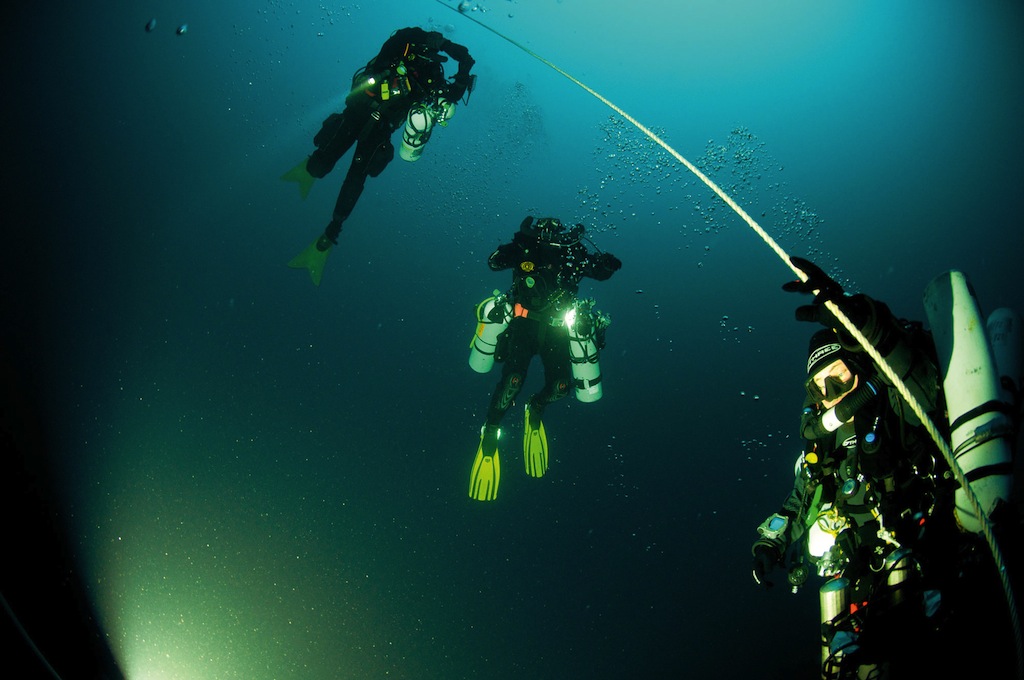
While preparing for the dive we got help when attaching the bailout bottles (our back-up in case of a rebreather problem), which was a great help as it had now become quite warm. After jumping in the water the group gathered at the buoy of the down line to conduct a last check before Pim gave the signal to descend.
The visibility in the water was murky for the first 15 metres but clear further down. During the descent we took time to get used to the rebreathers and after about five minutes I could see the wreck below me. While on top of the deck I was at a depth of 122 metres, and not far off I could see one of the large masts lying on the deck. From what I could see I reckoned we were between the foremast and the bow.
Meanwhile, Armando had started to film and we swam together along the deck, its wooden planking still discernible. The wreck was overgrown with anemones and coral, making it difficult to recognise parts of it. We had to be extremely cautious as we swam along the deck, as it was covered in numerous fishing nets and lines.
Swimming a little further on, I recognised one of the windows that had been used to light up the below decks. The ten minutes of bottom time were over before we knew it, and soon it was time to start our ascent. This took three long hours, and during the last part of it I started to feel the cold as the water was only nine degrees at the last decompression stop at six metres. I was therefore happy to see the sun shining when we returned.
Second deep dive in three days
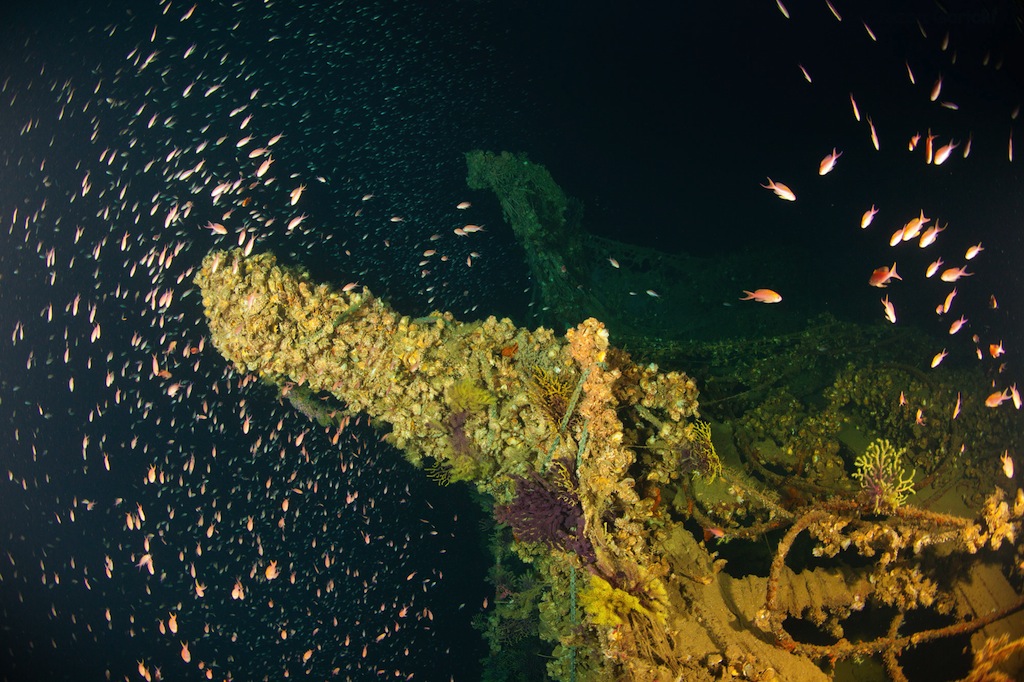
During our second deep dive we planned for the same ten-minute bottom time. The dive teams changed around a bit. I now dove in a team with Pim and Armando, and our goal was to get a better idea of the condition of the wreck. The weather was still fine with light winds when we reached the wreck site at around 10:00. Again, nothing was left to chance, and the dive gear, including rebreathers, were checked thoroughly.
While waiting on each other in the water we noticed that the visibility was extremely poor. We could barely see three metres ahead and big flakes of sediment were floating around in the water.
Luckily, that changed the deeper we descended, and on the wreck the visibility was excellent. On top of the deck I noticed two large holes of about four square metres to the left of me. Here I looked inside the wreck and noticed we could descend a further 10 metres into the wreck, going deeper than we could outside it. Inside the wreck I could see parts of the engine room. Meanwhile, I noticed Drazen Goricki was still taking pictures of the vessel.
We stayed on top of the deck and swam to the other side, where I found a bronze cylinder that looked like a part of a telegraph. Here we noticed considerably fewer fishing nets and lines. According to my estimation we were now at the midship. Here we found a large branch of white coral that had grown on the side of the wreck. Next, we swam back to the side, where we placed the down line and followed the edge along the bow.
Armando was still busily filming when we gave the signal to ascend. With a final glance backwards to this beautiful wreck, which still had much to be discovered, we started our long, slow ascent towards the surface. In future years the SS Natal will surely give up more of its secrets.
This article is an extract from the new book Diving for Treasure by Vic Verlinden and Stefan Panis. The book is published by Whittles Publishing.


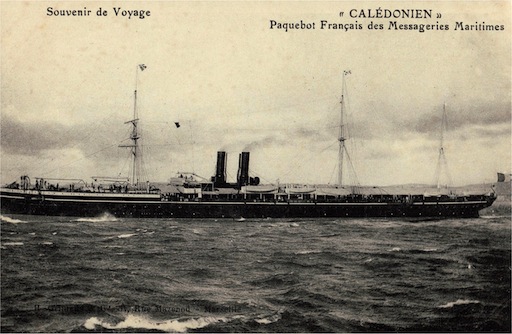 Calédonien, sistership of Natal
Calédonien, sistership of Natal






